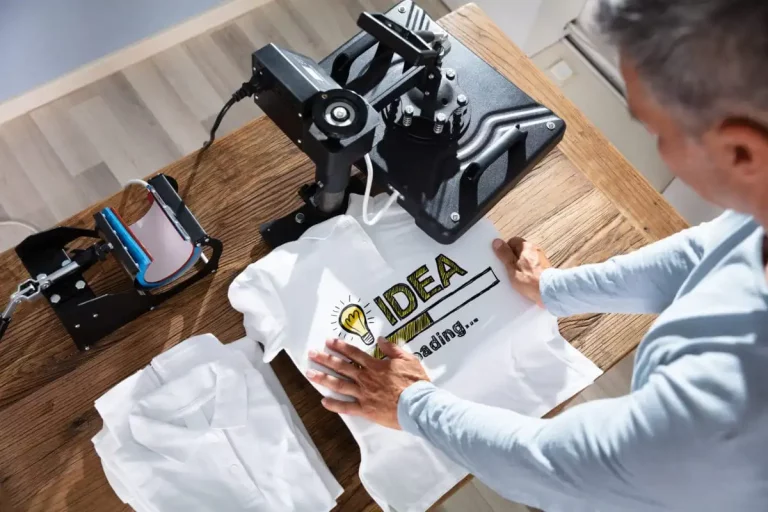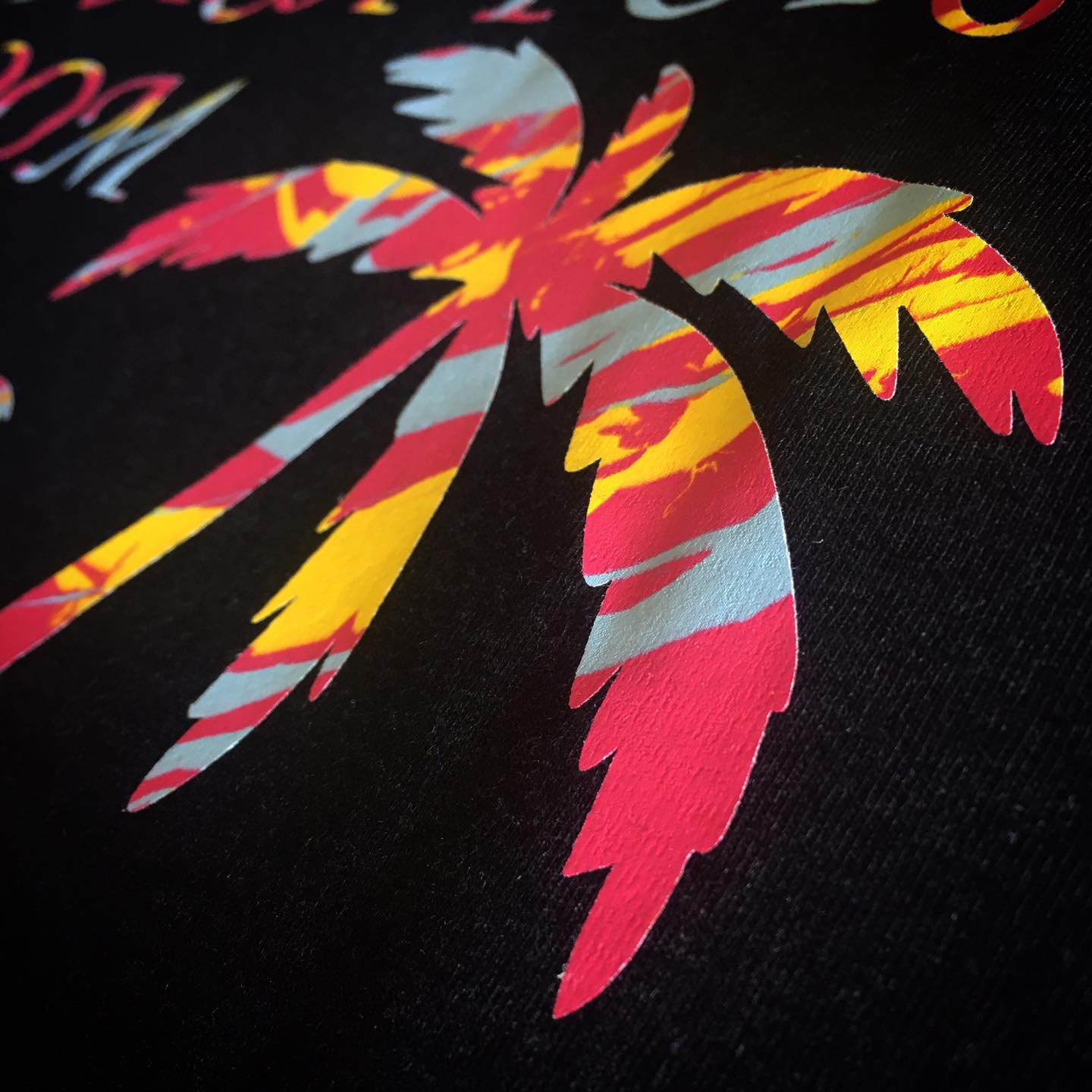Affordable Custom Screen Printing Services for Small Businesses
Wiki Article
Discovering the Art of Display Printing: A Comprehensive Overview to T-Shirt Printing Methods
When you step into the world of display printing, you're getting in a domain name where creative thinking fulfills craftsmanship. It's not simply concerning slapping ink on material; it's a meticulous procedure that needs the right devices and techniques.The Fundamentals of Screen Printing: Comprehending the Process
Screen printing, usually called serigraphy, is a versatile technique that enables you to move styles onto numerous surface areas. To start, you'll initially require to develop a stencil, which functions as the structure for your layout. This includes applying a light-sensitive emulsion to a screen and revealing it to light, where your artwork blocks the light from solidifying the solution.Once you've washed out the unexposed areas, you'll have a pattern ready for printing. Next, you place the display on your chosen surface, like fabric or paper. You after that apply ink on top of the screen and utilize a squeegee to press the ink via the stencil onto the surface area below. After printing, you'll need to cure the ink to assure it adheres appropriately. Comprehending these basic actions establishes the stage for producing vivid, long lasting layouts through the art of display printing.
Vital Tools and Products for Display Printing
To begin with screen printing, you'll need some key devices and products. From the best devices to the inks and solutions that bring your designs to life, each aspect plays an important role. Let's discover what you need to do well in this creative process.Screen Printing Equipment
While diving right into the globe of screen printing, you'll discover that having the right devices is important for attaining high-grade results. Begin with a strong display printing frame, which holds the mesh that moves ink onto your fabric. You'll also require a squeegee for pressing the ink through the mesh. A top quality exposure system is crucial for developing sharp designs when exposing your screens. Do not fail to remember a washout station for cleaning your screens after printing. In addition, safety gear like masks and handwear covers is important for your safety. Invest in a dependable heat source, such as a heat press or conveyor dryer, to cure your prints successfully. With these tools, you're well on your way to mastering screen printing!Solutions and inks
Selecting the ideal inks and solutions is necessary for accomplishing sturdy and lively prints. You'll wish to select inks based upon your desired coating and fabric type. t-shirt printing. Plastisol inks are preferred for their simplicity of usage and fantastic opacity, while water-based inks offer a softer feeling and are a lot more eco-friendlyEmulsions serve as a light-sensitive layer on your displays, vital for producing sharp stencils. Make particular to select a high-quality solution that matches your ink type; some emulsions work much better with plastisol, while others are excellent for water-based inks. Appropriate curing is also important; it ensures the ink sticks well and withstands washing. By purchasing the right inks and emulsions, you'll boost your screen printing game significantly.

Tools for Application
You'll require a durable display, preferably made of light weight aluminum or wood frames, along with a fine mesh for correct ink transfer. A squeegee is essential for applying stress and spreading out ink equally across the screen. With these tools, you'll be well-appointed for effective screen printing!Typical Screen Printing Techniques
Traditional display printing methods have actually stood the test of time, showcasing the art and craftsmanship behind this popular technique. You'll commonly begin with a stencil made from a fine mesh material stretched over a framework. This mesh permits ink to pass with while obstructing locations you intend to continue to be unprinted. When you've prepared your design, you'll use a light-sensitive emulsion to the screen and expose it to a source of light, setting the solution where you desire ink to circulation.After rinsing the unexposed emulsion, you're left with a pattern. You'll then place your display on the t-shirt, apply ink on top, and use a squeegee to push the ink through the mesh. This process can be duplicated for numerous shades, needing different screens for each and every. The outcome? Dynamic, long lasting layouts that display your imagination. Grasping these strategies gives you a strong structure for all your display printing endeavors.
Modern Innovations in Tee Printing
Today's tee printing landscape is humming with amazing advancements that are transforming just how you develop designs. With advancements in electronic printing, green materials, and advanced personalization technologies, you can generate one-of-a-kind, lasting t shirts like never ever before. Let's check out these modern techniques and see how they enhance your printing experience.Digital Printing Advancements
As digital printing technology has actually progressed, it's changed the landscape of Tees publishing, providing you unprecedented accuracy and imagination. Once virtually impossible with traditional methods, you can now attain complex layouts with vivid colors and elaborate information that were. Direct-to-garment (DTG) printing allows you to print directly onto fabric, making it suitable for tiny runs or personalized designs. Plus, the fast turnaround times suggest you can react to trends and client demands faster than ever. With developments in ink high quality, you can expect toughness and washability that measures up to display printing. This innovation not only enhances your layout possibilities however also opens up doors for one-of-a-kind creative expressions, letting your creativity shine on every Tee shirts you produce.Eco-Friendly Products Usage
While exploring contemporary advancements in T-shirt publishing, you'll find an expanding emphasis on green materials that focus on sustainability without compromising top quality. Additionally, water-based inks are getting popularity, as they generate much less hazardous overflow compared to typical solvent-based inks. These inks are not only safer for the environment but additionally give dynamic colors and soft structures on fabric.
Customization Technologies Advancement
With the rapid innovation of technology, modification in Tees printing has transformed considerably in current years. You now have accessibility to digital printing methods like Direct-to-Garment (DTG) and Dye-Sublimation, which allow for vivid colors and complex styles. These developments make it very easy to develop distinctive pieces without the high expenses of typical screen printing. In addition, on-line design platforms encourage you to picture your ideas before printing. You can explore different designs, colors, and placements within your reaches. Consequently, you can cater to private preferences and trends faster than ever. Accepting these modern-day technologies, you can raise your Tees styles and use clients special items that truly mirror their characters.Choosing the Right Ink for Your Designs
Just how do you select the right ink for your screen printing layouts? If you're printing on synthetic products, plastisol inks provide sturdiness and vibrant shades.Following, think of the coating you desire. Matte inks give a refined appearance, while glossy inks can add a striking sheen. If you're aiming for eco-friendliness, choose soy-based or water-based inks, which are better for the setting.
Don't forget color mixing; some inks can be combined to create one-of-a-kind tones. Test your inks on sample textiles to verify compatibility and appearance before beginning your major task. Ultimately, the appropriate ink can make a significant distinction in the top quality and longevity of your layouts, so select intelligently!
Tips for Creating Stunning Tee Shirt Styles
Developing stunning tee shirt layouts begins with a clear principle that reverberates with your target market. Think of what themes or messages will certainly link with them emotionally. Use eye-catching graphics and strong colors to order interest. Remember, simpleness often works ideal; cluttered designs can confuse viewers.Integrate typography that reflects the individuality of your brand-- choose font styles that are understandable yet fashionable, and mix them carefully. Focus on placement; the style should flow naturally with the t-shirt's form.
Try out different styles, such as modern or vintage, to locate what fits best. Do not avoid making use of unfavorable room successfully; it can produce a striking aesthetic impact.
Lastly, obtain feedback! Share your designs with good friends or potential customers to gauge their responses (t-shirt printing). Their understandings can guide you in improving your work, ensuring your final layout is not only spectacular but likewise market-ready
Repairing Usual Display Printing Challenges
When you come across difficulties in screen printing, recognizing the origin reason can make all the difference. Inspect your screen for appropriate stress and validate your emulsion is completely cured if you notice insufficient prints. For smearing or blurred photos, it might be because of improper ink viscosity or inadequate curing time; readjust your ink or cure setups as necessary.If you're handling color inequalities, confirm your ink blending proportions and verify your screens are tidy and free of residue.
Finally, if you're experiencing training or peeling, take into consideration the kind of material you're making use of and the warmth applied during curing; various materials need certain inks and temperatures. By dealing with these usual screen printing kit concerns systematically, you'll boost your results and enhance your confidence in screen printing. Keep exploring, and do not think twice to connect to fellow printers for tips and guidance.
Often Asked Questions
Can I Evaluate Print on Textile Aside From Tee Shirts?
Definitely, you can evaluate print on different materials besides tees! Think about things like shopping bag, hoodies, and even table linens. Just guarantee you're utilizing the appropriate ink and tools appropriate for the material kind.Exactly how Do I Tidy and Preserve My Display Printing Devices?
To clean up and preserve your display printing equipment, regularly wash screens with water and proper cleaners, examine mops for damage, and store everything in a completely dry, dust-free environment to prolong its life expectancy and guarantee high quality prints.What Is the Typical Cost of Starting a Screen Printing Company?
Beginning a display printing business typically sets you back between $2,000 and $10,000. You'll require tools, materials, and a workspace. It's necessary to spending plan intelligently and prepare for extra costs as your organization expands.Is Display Printing Environmentally Friendly?
Display printing can be environmentally friendly if you select lasting materials and eco-conscious inks. By taking on best practices and minimizing waste, you can lower your influence while creating dynamic, high-grade prints that appeal to aware consumers.How Can I Advertise My Personalized Tee Styles Effectively?
To promote your customized tee styles properly, take advantage of social media systems, team up with influencers, run targeted ads, and involve your target market via contests or free gifts. Consistent branding and high quality visuals will certainly bring in more customers.Exploring the Art of Screen Printing: A Comprehensive Guide to T-Shirt Printing Methods
Beginning with a durable display printing frame, which holds the mesh that transfers ink onto your material. By spending in the right inks and solutions, you'll boost your screen printing game significantly.
With innovations in ink quality, you can anticipate durability and washability that measures up to display printing.How do you select the ideal ink for your display printing layouts?
Report this wiki page